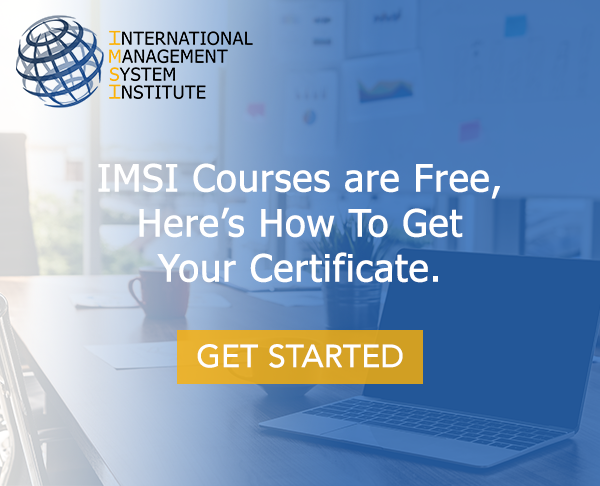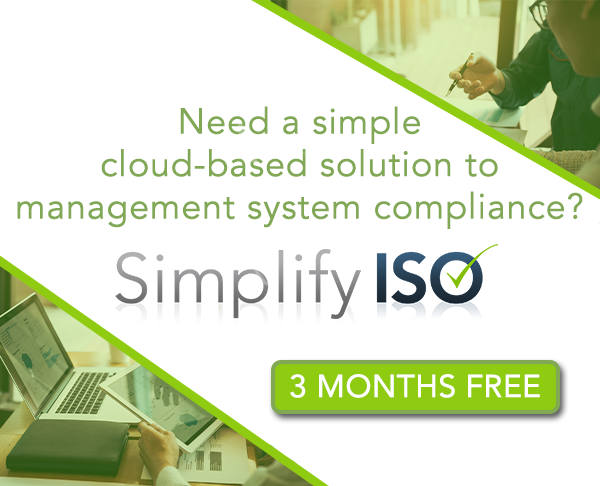ISO 9001 Basics Lesson #4 – Clause 5: Leadership
The video below offers an explanation of Clause 5. Watch the video and use your pdf workbook to follow along with different action steps to help you document how your organization meets each requirement.
Below is a short summary of each of the subclauses that are discussed at length in the video.

Clause 5.1.1 Leadership and Commitment
These 10 requirements are designed to get Management involved in the system:
a) Accountability for the effectiveness of the Management System can be demonstrated by attending Management Review (9.3) at the very minimum. Other ways to demonstrate it might be to have information sessions on how well things are going. Many organizations do this, and this can be evidence for this point. Daily, weekly, monthly, quarterly, semi-annual or annual meetings all contribute to meeting this requirement.
b) Policy (5.2) and objectives (6.2) are easy to prove, and the objectives need a 5-part (at least) action plan (6.2.2).
c) This means weaving the requirements of ISO 9001 into the way you do business, not add it on as ‘extra’ work. Make ISO ‘how we do business’ so there’s no one saying, “I’ve done my days’ work, now I have to do my ISO stuff”.
d) Promote the use of ‘the process approach’ and ‘risk-based thinking’. Flowcharts and a risk table will show that these ideas have been promoted.
e) Resources are a given. They also get reviewed in Management Review (9.3). You have to have adequate resources to meet customer requirements AND manage the system – internal audits, corrective actions, tracking performance, management review and the rest of the ISO 9001 requirements.
f) This communication can be done many ways – town hall meetings, tailgate meetings, huddles, formal and informal communications, banners, monitor messages, text messages on company phones…and anything else people need to meet customer needs and expectations.
g) Ensure the system is producing the expected results. Performance assessment (Clause 9) will demonstrate this as well as Management Review (9) and other feedback mechanisms – Internal audits, external audits, customer audits, Management Review, metrics. Regulatory Body visits will reveal how well the system is working, too.
h) Management has to get people on board supporting the management system. This is a matter of Leadership style. Ask employees to rate management on this one and tell management the results.
i) Promoting Improvement is how ISO pays a dividend on the investment. The three ISO ‘pillars’ are 1. Customer Focus, 2. the Process Approach and 3. Continual Improvement.
j) Encouraging and support other levels of management to demonstrate leadership enhances the ‘power’ of top management.
Clause 5.1.2 – Customer Focus
Top management needs to lead the way to keep the customer in focus. People will treat customers the way they see Management behaving. Management has to ‘walk the talk’ – a phrase coined by Ken Blanchard.
a) Essential for survival and starts with 8.2.2 determining customer requirements.
b) Then risk assessment needs to be robust – risks need to be identified and managed
c) Make sure that the organization is committed to enhancing customer satisfaction by meeting customer requirements – not just paying lip service.
Maintain the focus on customer satisfaction!
Clause 5.2 Quality Policy
The policy has to be appropriate to the purpose of your organization – mention what industry
you’re in at least, and perhaps a bit more detail about your position in that industry The Policy serves as a framework for the Quality Objectives that you saw in clause 6.2
Has to have a commitment to satisfying applicable requirements – all requirements: customer, legal, regulatory, documentation, association – anything related to an order.
There needs to be a commitment to improving the effectiveness of the Quality Management System. This idea of ‘system improvement’ appears 11 times in this Standard.
Make the Policy easy to read and understand. It needs to be ‘applied’ in your organization and you have to be able to show how this has been done. Make it accessible to Interested Parties.
Clause 5.3 Organizational Roles, Responsibilities and Authorities
The organizational structure needs to be ‘…communicated and understood..’ by persons working under the control of the organization…
This can be achieved with an organizational chart. You might want to have job descriptions linked to the title box on the org chart. The information has to be kept up to date. This is done with ‘document control’.
Specific responsibilities that have to be delegated:
– Someone has to be responsible to make sure the system meets the requirements of ISO 9001
– The processes have to be assessed to see if they’re getting the results you’re after
– Responsibility has to be assigned to determine Opportunities for Improvement and Top Management has to be made aware of them. Top management also has to be made aware of how well the system is working
– Customer focus needs to be promoted throughout the organization
Make sure that changes are managed to reduce any negative outcomes. Use your flowcharts to avoid any unplanned results.
Leaders need to understand the impact they have on the management system.


